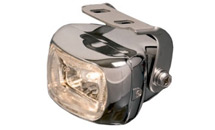| You might notice that the lights are among the auto parts with the most number in a Nissan Maxima and in any other automobile. That explains the vitality that the lights play in the performance of the vehicle. Different lights are installed in various sections of your car, and each of these pieces performs a specific function. The primary lights in automobiles are the headlights and the tail lights. The headlights are used to illuminate the road ahead of you, thus they are installed at the front-end. Tail lights, on the other hand are mounted at the rear end to warn the drivers behind you of your presence as well as signal them of the move you are taking. |
Aside from these two primary lights, you also have auxiliary lights which are specially designed for specific driving conditions. The headlights and tail lights alone are not capable of handling the different degrees of visibility obstruction that you encounter during travels, thus secondary lights are needed. Among the most common auxiliary lights found in your car are the Nissan Maxima fog lights, though some units include them with the original package. |
As their name implies, fog lights are used during foggy weathers. Since foggy conditions are much different and more serious compared to a simple dark or night drive, they require a specialty type of lights to handle them, and it is for this reason why fog lights are designed. Fog creates obstruction to visibility like darkness does. But while darkness can be easily penetrated by ordinary light, fog is different. The light emitted by the headlights only bounces back upon hitting the fog particles, and this may even intensify visibility problems. But because fog lights emit a more focused beam, the light is able to get through the fog enabling you to see well. Plus, they provide wider light dispersion which is maximized by their location. |
If you encounter deeply-set for on your daily driving, then having a pair of reliable Nissan Maxima fog lights is badly needed. The visibility that they provide can mean the difference between getting to your destination safe and ending up into an accident. |
Maxima Driving Lights

